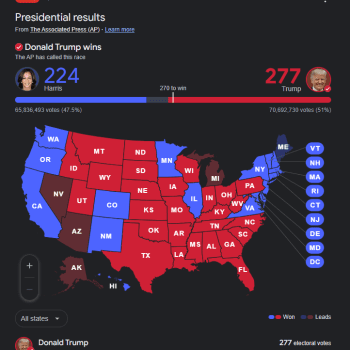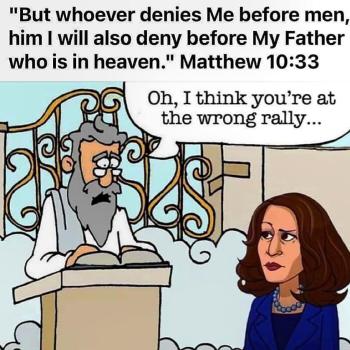My adult Sunday school class at Crooked Creek Baptist Church has read Genesis 1-3 together, often on the occasion of Evolution Weekend. Today, for the first time, we pressed on into Genesis 4, with the aim of carrying on studying the rest of Genesis and perhaps beyond.
The expected questions came up. Why did God prefer Abel’s offering to Cain’s? Where did Cain’s wife come from? Who was Cain was afraid would kill him when he was driven out from the vicinity of Eden? We noted the ancient idea of God reflected in this: God is not depicted as omnipresent, but as residing in Eden so that being driven out of Eden puts you at a distance, and being driven further away still makes you an exile from the presence of God.
As all these points converged, I found myself taking us back to Genesis 1 and revisiting some points I had heard others emphasize, and seeing some familiar things in a new way.
I have long been aware that Genesis 1:26-27 does not claim that God made a single couple of humans. Indeed, if we treat the creation of human beings in the context of the chapter as a whole, we would naturally understand God to have made populations of humans as of birds and fish and land animals. The depiction of the creation of Adam and Eve in Genesis 2 often leads readers to assume otherwise. Yet approaching via both chapter 1 and chapter 4 it struck me for the first time that even Genesis 2 does not necessarily imply that God made only one human being and then a second. It says that God made a particular human being, then a garden, and then placed this particular human being that he made into the garden. The Garden of Eden functions in a manner akin to a temple, as a number of scholars have noted (see Lifsa Schachter’s article “The Garden of Eden as God’s First Sanctuary.” Jewish Bible Quarterly 41, 2013, pp. 73-77; Seung Il Kang, “The Garden of Eden as an Israelite Sacred Place.” Theology Today, vol. 77, no. 1, Apr. 2020, pp. 89–99; G. K. Beale, “Adam as the First Priest in Eden as the Garden Temple,” SBJT 22.2, 2018, pp. 9-24). It is a place where the divine presence dwells. Adam and Eve are not the only humans, they are the priests who represent humanity to God and God to humanity.
Understood in this way, not only are serious difficulties related to the presence of other human beings in the world reduced, but the story of creation now connects more directly to the stories of election, covenant, land, and temple building that follow. After the catastrophe in Eden, God is hopeful when some of the exiles who have preserved a memory of the divine name begin to call upon it. When the world is overrun by sin, God tries rebooting creation, allowing the waters of chaos to return and the recede once more. God tries selecting another human to have his progeny become priests and kings of God and a light to the world. The connections that so many later authors within Judaism (and eventually also in Christianity) draw are natural to find in the text if we understand it this way.
The title for this blog post provocatively refers to the “plain reading” of Genesis 1-4. Of course there is no such thing. What I propose here is nevertheless a reading that takes a number of details in the text more seriously than do many who claim to be literalists eager to faithfully stick to the text and what it says.
The story of a garden with a talking snake, with a river that becomes four famous rivers that do not meet in the real world, clues the reader in that the plainest reading will treat the story as myth, parable, and symbol. Ignoring everything you know about stories with such details isn’t a “plain reading” nor is it respecting the Bible, but rather it is imposing on the Bible things you think are required of you. In emphasizing that the stories in Genesis are more than mere stories, some do not even respect them as stories, ignoring many details and twisting many others.
What do you think of this way of understanding Genesis 1-4? I know I am not the first to suggest this way of understanding it. The logic of this interpretation struck me in a new way recently, however, as I talked through the text with my Sunday school class.
Let me add that we now have a camera and speakers built in in the church library in which my class meets. We have had guests join meetings there via Zoom and it has worked well. If you’d like to pay a visit to or simply begin attending and participating in my Sunday school class remotely, let me know. We are delighted that, where we used to have to limit such invitations to those in our geographic vicinity, today’s technology means that’s no longer necessary. No matter where you live, you can join us!
.













